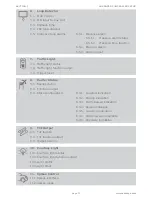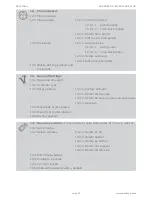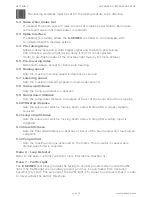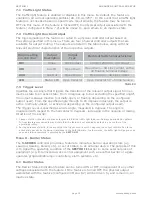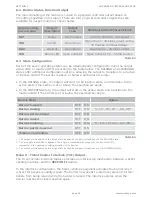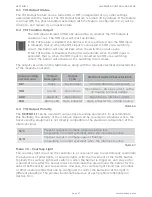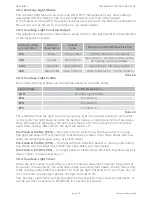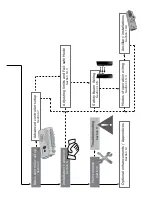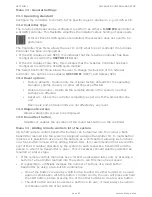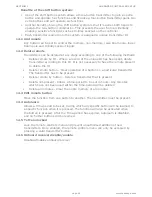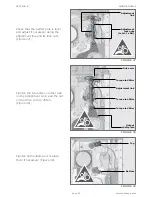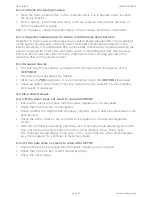
page 43
www.centsys.com
Menu 11 - Spikes Control
This menu determines how the
S-SERIES
controller interacts with the CLAWS Spikes
modules. Spikes Control will interface / control Standalone or Direct Drive Spikes.
11.1 Spikes Interface
The spikes interface enables the electrical communications interface and functional
barrier behaviour that allows the S-Series Controller to interface with Spikes hardware.
CENTURION offers two CLAWS units that are compatible with the
SECTOR II
barrier.
Refer to the CLAWS literature for further information on this product range.
11.2 Spikes Mode
The Spikes Mode setting configures the S-Series Controller to control the specific
operational behaviour of the spikes and the barrier in combination. There are three
Modes of Operation:
SAF - Safe Mode:
This mode is only applicable to an Independent Drive system. In
this mode, the barrier will only raise when the S-Series Controller has confirmed that
the spikes have reached their fully lowered position. When the S-Series Controller is
commanded to lower the barrier, the barrier must reach the fully lowered position, before
the raise signal is issued to the CLAWS Controller.
SEC - Secure Mode:
This mode is only applicable to an Independent Drive system. In
this mode, the S-Series Controller will raise the barrier at the same time that the lower
signal is issued to the CLAWS Controller (causing the spikes to start to lower). Similarly,
the S-Series Controller will lower the barrier at the same time raise signal is issued to the
CLAWS Controller (causing the spikes to start to raise).
DIR - Direct Drive Mode:
This mode is only applicable to a Direct Drive CLAWS system.
In this mode, the S-Series Controller will only turn the traffic light green when the spikes
are in their fully lowered position. In any spikes orientation other than fully lowered
orientation, the traffic will remain in a red state.
Menu 12 - ChronoGuard (Time-periods) A World First
12.1 Time and Date
ChronoGuard allows automatic activation or time-barring (prevented operation) of
specific controller inputs, and the time-barring of specified remote control buttons used
together with the onboard receiver. The Real-Time Clock and Calendar will maintain
time-keeping for a minimum of one hour without any power.
12.2 Time-periods
A Time-period is defined by a start and end date and time. Up to 100 Time-periods
can be defined. A Time-period can be set as a once-off event or repeated on a weekly
or annual basis. The weekly repeat can be chosen to occur on every day of the week,
weekdays only, weekends only, or any specific day. The minimum duration of a
Time-period is one minute. Once-off time periods have the highest precedence,
followed by annual and then weekly.
Auto-functions (Auto-activations)
Automatically activate any of the listed inputs/outputs during a time-period.
Inputs
• Barrier-raise
• Barrier-lower
• Barrier-disable (LCK) - also referred to as ‘Holiday Lockout’
• Closing-loop (ILD)
ADVANCED CONTROLLER SETUP
SECTION 7
Summary of Contents for SECTOR II
Page 82: ...page 82 www centsys com Notes...
Page 83: ...page 83 www centsys com Notes...



